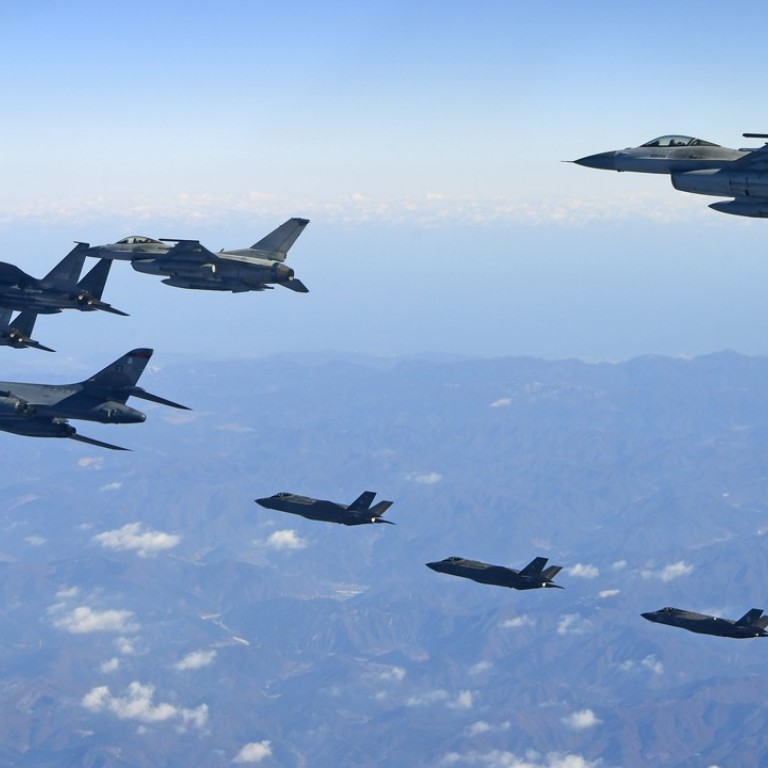
Beijing plays down South Korea’s claims Chinese warplanes breached its air defence zone
Drills were ‘lawful and reasonable … not targeted at any specific country or region’, air force spokesman says
Seoul on Monday accused Beijing of infringing its air defence identification zone after China’s air force conducted a long-range exercise into the Sea of Japan.
South Korea’s Joint Chiefs of Staff said five Chinese military aircraft were detected entering its air defence identification zone from southwest of Ieo Island – known as Suyan Islet in China – about 10am on Monday and leaving at 2pm. Seoul described the move as an infringement and scrambled F-15K and KF-16 fighters to monitor the situation.
“Our fighter planes took normal tactical measures, identifying the models of the Chinese planes and flying aerial surveillance until they left,” it said in a statement.
Shen Jinke, a spokesman for China’s air force defended the move, however, saying Chinese H-6K bombers, Su-30 fighter jets and Yun-8 transport aircraft transited through the Tsushima Strait and entered the Sea of Japan as part of a routine operation.
“The drills were lawful and reasonable,” he was quoted as saying in a statement released by China’s defence ministry, adding that they were “not targeted at any specific country or region”.
Monday’s exercise in the Sea of Japan was in line with China’s efforts to extend the scope of its capabilities, both in the air and at sea, as it seeks not only to protect its interests but also flex its growing military muscle, Beijing-based military expert Li Jie said.
“It’s normal and routine now for China’s military forces to enter international waters or airspace,” he said.
“To project power and protect its overseas interests, Chinese forces have to go further and further.”
Hong Kong-based military analyst Leung Kwok-leung said the exercise would also give Chinese pilots a better understanding of the routes to the Sea of Japan.
“By building up their knowledge, in a wartime or an emergency situation, they will be able to fly directly to the Sea of Japan from northeastern China,” he said.
Ben Ho, a senior analyst with the Military Studies Programme at S. Rajaratnam School of International Studies at Nanyang Technological University, said that although Chinese warplanes passed through an area where China’s and South Korea’s air defence identification zones overlap, it was unlikely to have any negative impact on relations between the two countries.
“While the deployment may come as a surprise so soon after the Xi-Moon meeting, it should not significantly upset Sino-South Korean ties as the two nations have a greater common interest in countering the threat posed by Pyongyang’s missile and nuclear programmes, as well as fostering already close economic relations,” he said.
He was referring to the recent meeting between South Korean President Moon Jae-in and China’s President Xi Jinping during the former’s four-day visit to Beijing.
South Korea in late 2013 said it had expanded its air defence identification zone to Ieo Island – a submerged rock in waters off its southern coast. The move came in response to China demarcating its air defence identification zone in the East China Sea a month earlier.
Both nations have denied they are involved in a territorial dispute over the islet.
Air defence identification zones are early warning systems that help countries to detect incursions into their airspace. Any aircraft entering such an area is supposed to report its route and purpose to the “host” nation. However, the zones are classified as international airspace and pilots are not legally bound to make such a notification.
As well as China and South Korea, the United States, Canada, Russia, Vietnam and Taiwan all have air defence identification zones.

